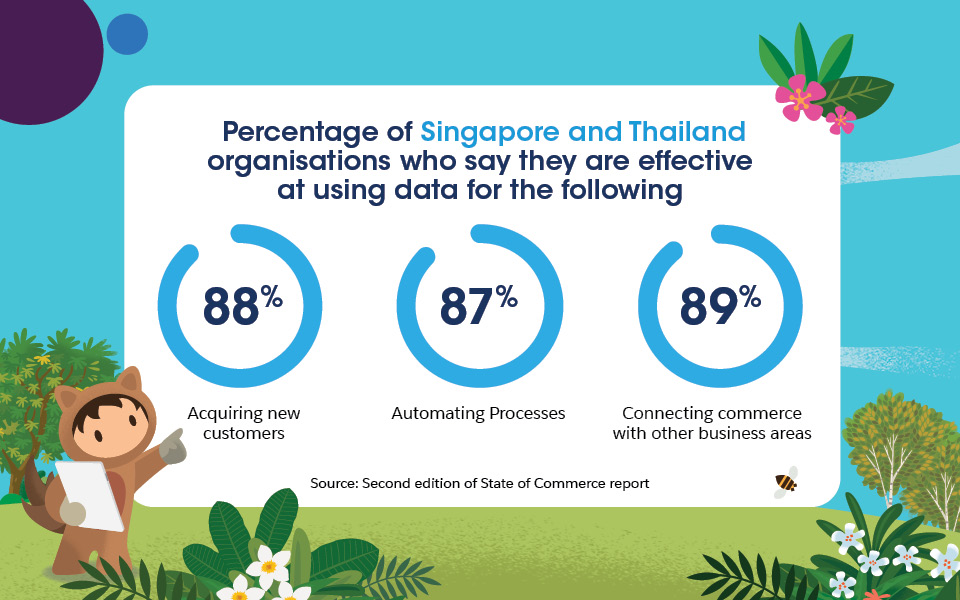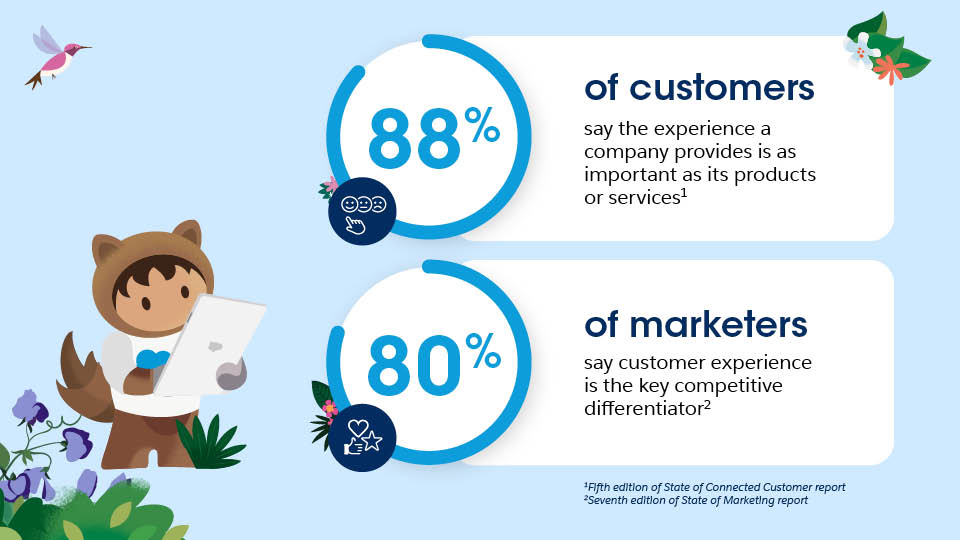The world of commerce has evolved significantly in recent years. As digital commerce continues to boom, customers are also increasingly returning to in-person experiences. This trend is expected to continue globally and in the ASEAN region for the next few years. So, how can businesses respond to the complex demands of today’s customers?
To better understand the commerce landscape in 2022, Salesforce analysed shopping behaviour from websites that use the Commerce Cloud platform. We also surveyed over 4,000 global commerce professionals in this research. Here are the key insights and learnings from the latest State of Commerce report to help you provide better service to your customers.
1. Deliver a seamless omnichannel experience
The pandemic has accelerated the shift toward digital-first commerce. Revenue from digital channels continues to grow across Southeast Asia. This is prompting businesses across industries to invest in new digital channels, with even business sellers now planning for an ecommerce-focused future. Many commerce organisations are already developing strategies for emerging channels like TikTok, digital storefronts, and the metaverse. 
This expansion in channels comes with its own challenges. In Singapore, respondents ranked channel conflicts as their second biggest challenge. Buying journeys are becoming more complex, with B2C consumers engaging across an average of nine touchpoints when interacting with a company. This is making commerce increasingly complex and distributed.
Despite these challenges, businesses should focus on expanding their digital channels to meet customer expectations across every pre-sale and post-sale touch point. This is reflected in the fact that globally 69% of digital leaders say they’ve invested in new digital channels over the last two years. The adoption of new channels can help a business prepare for disruptions like supply chain shortages and inflation.
Even B2B organisations can benefit from expanding their digital channels, as buyers become more digital than ever. The biggest benefits of digital channels to business sellers are improved customer satisfaction, expansion into new regional markets, and growth to their customer bases.
As this trend in distributed commerce evolves, businesses are required to continuously invest in providing a seamless experience across channels.
2. Make informed decisions driven by data
Commerce organisations across the world are firmly focused on putting data into action. In Singapore and Thailand, a majority of respondents agreed or strongly agreed that their organisations were effective at using data — to acquire new customers, automate processes, and connect commerce to other areas of their business. 
However, the increasing digitalisation of commerce faces a few challenges, from tightening global regulations on data protection, to reducing the use of third-party cookies. More than one-third (36%) of global respondents said they are investing in first-party data strategies to address some of these challenges.
As buying journeys become more complex, collecting data across all channels is no longer sufficient. Businesses need to combine their data to help their teams make well-informed decisions quickly. By using data to understand customer behaviour and develop marketing or business strategies, businesses can build customer trust and gain a significant competitive advantage.
3. Focus on flexible fulfilment and the post-purchase experience
With customers increasingly prioritising convenience when choosing brands, organisations are now focused on offering flexible fulfilment. Nearly all B2C sellers globally offer at least one convenient fulfilment option, such as buy online-pickup instore (BOIS), curbside pickup, or fast shipping. Even business sellers are now offering the same flexible fulfilment options to their customers. This is prompting organisations to focus more on the optimisation of the entire fulfilment journey, with 44% of global respondents saying this will be a key priority.
The demand for customer convenience is also leading to a growing range of offered payment options. More than half (52%) of respondents in Singapore and Thailand say they accept Apple Pay while 54% accept buy-now-pay-later instalment plans. Over one-third (37%) of other respondents plan to offer these options within the next two years. 30% are already accepting cryptocurrency, while half of the respondents say they plan to accept cryptocurrency in the future.
 As customers seek flexibility across options, it is more important than ever for businesses to focus on delivering a seamless and simplified experience.
As customers seek flexibility across options, it is more important than ever for businesses to focus on delivering a seamless and simplified experience.
How is your business adapting to the changing commerce landscape?
Today, commerce organisations have to navigate a complex world of shifting customer expectations, expanding sales channels, and evolving data challenges. By leveraging the power of data across channels, businesses can build a sound strategy to deliver exceptional customer experiences and increase their profitability. This is how they can meet customers where they are.
Want to learn more?
Explore the State of Commerce Report to find out what industry leaders are prioritising as they prepare for what’s next in commerce.




























